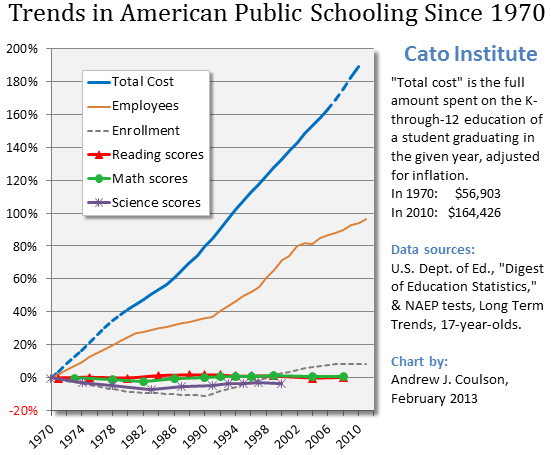So, I tried to read my free review copy of The UnStoppables, by Bill Schley. I hate his writing style, but I think that on substance the book, which is a guide/pep-talk for entrepreneurs, is actually good. In talking about how to come up with a business idea, Schley suggests asking yourself these questions (p. 22):
1. I wish I could, so why can’t I?
2. What if?
3. How come no one ever fixed that?
4. Why does this have to be such a pain?
For a long time, I have wished that I could better navigate the world of online learning. What if there were a guide for online learning that students could use to find the best resources and that educators could use to benchmark the competition and share resources? There are lots of great learning videos online, but there is a lot of garbage, and it’s not easy to get straight to the best. How come no one ever fixed that? As a teacher, I find it very difficult to share learning resources with other teachers–using some of their videos, adopting some of their online quizzes, etc. Why does this have to be such a pain?
On my recent vacation, I saw how Rick Steves and tripadvisor.com have gone a long way toward solving these problems for travel. So my latest idea for an education start-up is something like a Rick Steves or tripadvisor.com for online learning resources.
The Rick Steves model ensures consistency of how evaluation takes place, and it gives you the voice of a dedicated, opinionated consumer. The tripadvisor.com model uses crowd-sourcing, so you get less consistency of methodology but broader, timelier coverage.
Let’s assume the Rick Steves model, and take first-year statistics as the prototype. If you were Rick, you would list the topics that you think generally belong in such a course. Then go through all the online materials available from Khan, Kling, Udacity, Coursera, Carnegie-Mellon, etc., and create a model itinerary for students. If one of these brands just dominates in every topic within first-year statistics, then recommend that brand. Otherwise, for each topic, list the top three explanatory videos, the top three sets of interactive exercises, etc.
It is important to remember that your perspective is that of a typical student, not that of someone with an advanced background in statistics. Your advanced background may lead you to over-rate deep, brilliant lecturers (like Udacity’s Thrun) and under-rate folks like Khan who keep it simple and glide past issues that someone pursuing a Ph.D in stats would want to treat more carefully.
Two factors would make the online learning space harder to profit from than the travel space. First, the online learning world changes more rapidly. It takes a couple of years to put up a new hotel. It takes much less time to put up a new lecture or quiz on the central limit theorem. So you couldn’t sell printed books easily, since they would be out of date before they are published. Even with a web site, a lot of the work you do in 2013 will have to be tossed out or re-done in 2014.
The second factor is that it would be harder to generate revenue from advertising. Travel web sites are complementary to the existing bricks-and-mortar folks (hotels, restaurants, rental car companies), who get the concept of advertising. Bricks-and-mortar educators, on the other hand, view the online world as a competitive threat rather than as a pure complementary good. It’s not clear that a for-profit university or textbook publisher would see any point in advertising on the sort of site that I have in mind.
